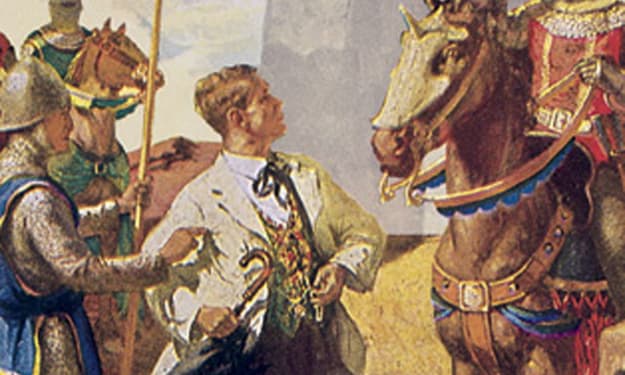"The Complete Stories" by Ernest Hemingway
A Reading Experience (Pt.58)

Ernest Hemingway was an author that, when I was growing up, I wasn’t overly interested in. By the time I had first read his short stories, I had already read the books “For Whom the Bell Tolls” and “A Farewell to Arms” and I didn’t particular enjoy either of them. At the age of about thirteen, Hemingway’s writing can seem bland, dry and almost dull but, as I grew up and re-read the short stories, I noticed that I was very wrong indeed. In fact, it is the dry nature of the stories that make them so interesting and fulfilling to read. I first read the short stories at the age of thirteen and yet, I couldn’t make head or tail of them.
I noticed that they weren’t like other short stories and didn’t really have a beginning, middle and end. They weren’t based around particular things I was aware of and I couldn’t really identify more than two or three big themes at a time. I found them to be more confusing than the dry nature of the novels but preferred these to his longer works. I was always concerned as I was turning into my teens that I wouldn’t manage to get into Ernest Hemingway’s writing because I had constantly heard of him as an amazing writer and nearly every bookworm I knew had him listed as one of their favourite authors.
I hadn’t yet read “The Sun Also Rises” (and I wouldn’t until I was fifteen) and yet, I was already part way into my Hemingway experience - and it wasn’t going at all well. I didn’t revisit the short stories until the following year where I was adamant that I was going to try harder to analyse the subtle nuances of the text. I wrote in my diary that summer:
“Hemingway is harder than I thought. I just can’t read into his work. There’s a difference between reading and reading into something. The reading part is easy because he never really uses longer and less obvious words. But the reading into part is hard because there must be more to the story than someone wanting a damn cat whilst staying in a hotel. There must be more to a story than a kitchen-worker dying because he got stabbed after messing about by accident. These incidents seem really pointless so I think I’ll be here a while.”
And I was there a while. In fact, I spent the next few years trying to figure out what Hemingway was talking about and to this day, I can tell you, I’m only half sure. I re-read the book again around the time I was sixteen and noticed some symbolism regarding the matador, violence and the passion of the human soul. In fact, the story I referenced in my diary entry entitled “The Cat in the Rain” seemed to me to symbolise the change from the Jazz Age to the 1930s and beyond. The fact that the lady wanted to grow her boyish hair out and she wanted a bunch of new aristocratic things that are so much associated with the snobbery of the 30s - it just goes to show there’s a mass of symbolism in dialogue. The cat was a representation of the change made flesh. The way it disappears and reappears again is symbolic of the fall of the aristocracy at the end of the 30s only for them to have a resurgence again later on in the same century. There’s a number of things in that story that I discovered from that reading when I was sixteen that I decided to write an essay about it. It’s gone somewhere and I wish I had kept it.
I re-read the book again when I was twenty-one and noticed even more things concerning Nietzsche’s philosophies of good and bad. The second story I reference in the diary entry I believe is the story about the kitchen boy who tries to imitate what happens at the matador and accidentally ends up being stabbed to death and lies bleeding on the floor. When I analysed this with the Nietzschian philosophies, I saw that this could neither be thought of as a good or bad act because a) it was an accident and by no means done on purpose b) it was not the fault of the person doing the stabbing c) it was also not the fault of the person who had been stabbed. It was just purely circumstance - time and place. Both of them were wrong.
About the Creator
Annie Kapur
200K+ Reads on Vocal.
English Lecturer
🎓Literature & Writing (B.A)
🎓Film & Writing (M.A)
🎓Secondary English Education (PgDipEd) (QTS)
📍Birmingham, UK






Comments
There are no comments for this story
Be the first to respond and start the conversation.